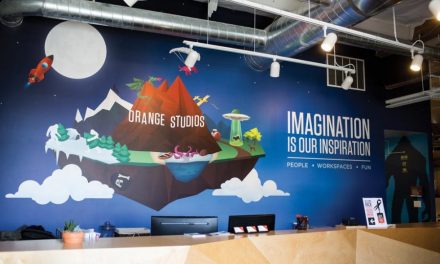The way we work is evolving rapidly, and with it, our office spaces. The rise of remote work and the gig economy has given birth to a new concept in the business world – coworking spaces.
These collaborative and hybrid workspaces have gained immense popularity in recent years. Since 2020, there has been a 158% increase in coworking space supply on a global scale.
However, the traditional office setup still holds its ground as a tried and tested model. In this article, we will explore the benefits and drawbacks of both coworking spaces and traditional offices to help you determine which option is the best fit for your business.
Whether you’re a remote worker, a freelancer, a small business owner, or a property developer, understanding the nuances of coworking spaces and traditional offices is crucial.
What are Coworking Spaces?
Coworking spaces are shared workspaces where individuals from different companies or professions come together to work in a communal setting. These spaces provide a variety of amenities such as desks, meeting rooms, high-speed internet, and sometimes even recreational areas.
The atmosphere in coworking spaces is characterized by a vibrant, collaborative, and dynamic energy, as well as offering the following benefits.
Benefits of Coworking for Your Business
Coworking spaces can offer a range of benefits for your business by providing a dynamic and modernized working environment.
Flexibility
One of the primary advantages of coworking spaces is their flexibility. They offer flexible membership options, allowing individuals or teams to choose from daily, weekly, monthly, or even yearly plans.
This flexibility makes it an ideal choice for freelancers and startups who may require a workspace for a shorter duration or who need the freedom to scale up or down their operations as needed.
Geographical flexibility is also a major upside to coworking spaces as individuals are able to work from different coworking locations around the world. It is important to note that working abroad may require the need for a different domain name. If, for example, you were working overseas for a company based in Hong Kong, you may need to acquire a HK domain name.
Networking opportunities
Coworking spaces foster a sense of community, and thus provide excellent networking opportunities. Working alongside professionals from diverse industries can lead to valuable connections, collaborations, and potential business partnerships.
Statistics revealed by The Executive Zone found that individuals in a coworking study expanded their social networks by 79%. There are also community events and workshops organized by owners of coworking spaces, which can further enhance networking possibilities and the likelihood of collaboration.

Health benefits
Coworking spaces promote a healthy body and mind through ergonomic furniture, dedicated areas for physical activity or relaxation, and a collaborative atmosphere fostering social connections.
By providing amenities like natural light, greenery, and wellness programs, resulting in increased productivity, reduced stress, and overall well-being.
Cost savings
Compared to traditional offices, coworking spaces can be much more cost-effective, especially for small businesses and startups. They eliminate the need for long-term lease commitments, upfront capital investment, and the expenses associated with setting up and maintaining a dedicated office space.
Additionally, shared amenities and resources reduce individual costs, making them an attractive option for budget-conscious professionals.
Drawbacks of coworking spaces
While coworking spaces are becoming increasingly popular in contemporary society, their unconventional nature can prove problematic for some businesses and workers.
Lack of privacy
Coworking spaces encourage collaboration, but they often lack the privacy that traditional offices provide. Open floor plans and shared areas mean that sensitive discussions or confidential work have the potential to be compromised.
Distractions
Coworking spaces often have an energetic, dynamic and unstructured communal environment, which can be both invigorating and distracting. The presence of other professionals, social interactions, and various events happening within the space can sometimes hinder concentration and productivity.
Limited control over the workspace
A key drawback of coworking space is that you have limited control over the physical environment. From the layout of the space to the choice of furniture, you must adapt to the existing setup, rather than mold your environment to the needs of your business.
This lack of control may not suit businesses with specific branding requirements or unique spatial needs. It also may prove too unstable and unpredictable for certain individuals that require a consistent environment.

What are Traditional Offices?
Traditional offices are dedicated spaces owned or leased by a single company or organization. They offer a private and exclusive working environment for employees and are usually tailored to the specific needs of the business. Traditional offices can range from small individual offices to large corporate headquarters.
The environment is very structured and there is a hierarchical structure with clear roles and reporting relationships. Managers provide direct supervision, and a formal dress code is often enforced.
Benefits of a Traditional Workspace
Despite the increasing array of modernized coworking environments, traditional offices continue to retain favor among many businesses due to the multiple benefits they offer.
Professionalism
Traditional offices exude a sense of professionalism and permanence. Having a dedicated space that reflects your brand identity can create credibility and a positive impression on clients and partners.
Professionalism ensures an ingrained working culture, which can contribute to a sense of belonging, shared values, and a cohesive team spirit. A study found that 78% of Generation Z found it easier to bond with colleagues in a traditional office setting.
Privacy
Privacy is a significant advantage of traditional offices. The closed-door setup allows for confidential discussions, sensitive meetings, and focused work without the concerns of eavesdropping or distractions. This privacy is especially crucial for industries that handle sensitive data or require confidentiality.
Direct supervision and support
In a traditional workspace, managers and supervisors have direct oversight of their teams. This allows for close supervision, guidance, and support, ensuring that employees stay on track and have access to immediate assistance when needed.
Workspace structure
With a traditional office, you have complete control over the workspace. You can design and customize it to align with your company culture, values, and specific operational requirements. From layout to décor, every aspect can be tailored to enhance productivity and employee satisfaction.
Drawbacks of Traditional Office Spaces
The contemporary economy features an increasing number of smaller, more dynamic companies and workers for whom traditional workspaces can have a number of significant drawbacks.
Higher costs
Traditional offices often come with high costs. Leasing or purchasing commercial space requires a significant financial investment, along with additional expenses such as utilities, maintenance, and furnishing.
These costs can significantly impact a company’s budget, especially for small businesses or startups with limited resources.
Limited networking opportunities
Unlike coworking spaces, traditional offices typically lack the diverse professional community and networking opportunities that come with shared work environments.
Working within a closed setup may limit your exposure to potential collaborators, clients, or mentors from different industries.
Geographical limitations
Traditional workspaces are usually tied to a specific physical location, limiting the talent pool to those who can commute or relocate to the area. This can restrict the diversity and breadth of perspectives within the organization.
Traditional workspaces also have limited remote work options, which can hinder the ability to attract and retain top talent. Typically, there is also less flexibility in regards to selecting an overseas domain name and opting for an io domain registration, for example.

Traditional or Coworking Space?
When deciding which working environment is right for your business, it’s crucial to first consider the specific needs of your company or workers before consulting the pros and cons of coworking and traditional office spaces.
First, assess the nature of your work to determine if privacy or specific spatial arrangements are necessary. Then evaluate your budget and determine if you can afford the costs associated with traditional offices.
Additionally, think about the importance of networking and collaboration for your business and whether coworking spaces can fulfill those needs.
Consider your growth plans and decide if a flexible coworking setup or a dedicated traditional office space is better suited for accommodating your expanding team.
Once this process is complete, you should consider the pros and cons of coworking and traditional office spaces.
Coworking Space Pros and Cons
Pros:
- Flexibility
- Networking opportunities
- Health benefits
- Cost savings
Cons:
- Lack of privacy
- Distractions
- Limited control over the workspace
Traditional Office Pros and Cons
Pros:
- Professionalism
- Privacy
- Direct supervision and support
- Workspace structure
Cons:
- Cost
- Limited networking opportunities.
- Geographical limitations

Our Recommendation
For professionals who value flexibility, networking, and cost-effectiveness, coworking spaces can be an excellent choice. Startups, freelancers, and businesses with dynamic operational needs can benefit from the vibrant and collaborative environment coworking spaces provide.
However, if privacy, control, and a dedicated space are crucial for your business, a traditional office setup might be more suitable.
Ultimately, the best fit for your business depends on your unique requirements, budget, and growth plans. Carefully assess the pros and cons of each option to make an informed decision that aligns with your business goals and values.









